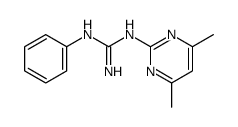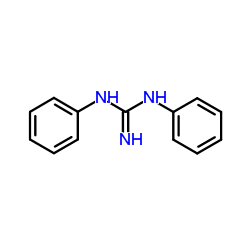102-02-3
| Name | phenyl biguanide |
|---|---|
| Synonyms |
N-Phenyliminodicarbonimidic Diamide
Phenylbiguanide MFCD00179077 1-(diaminomethylidene)-2-phenylguanidine EINECS 202-998-5 |
| Description | Phenylbiguanide is a 5-HT3 receptor selective agonist with an EC50 of 3.0±0.1 μM. |
|---|---|
| Related Catalog | |
| Target |
5-HT3 Receptor:3 μM (EC50) |
| In Vitro | Phenylbiguanide (1-Phenylbiguanide) is a 5-HT3 receptor selective agonist with pEC50s of 5.57, 4.07, and 4.47 for r5-HT3A(b), h5-HT3A, m5-HT3A(b) , respectively[1]. The effect of Phenylbiguanide (1-Phenylbiguanide hydrochloride) in promoting the growth of the HT29 cell line is investigated. Phenylbiguanide causes a dose dependent proliferation of HT29 cells after 48 hours incubation. The maximum proliferation is at a 5HT concentration of 12.5 μM (P≤0.01). Phenylbiguanide significantly stimulates the growth of cells at concentrations of 3.125 μM (P≤0.05) and 6.25 μM (P≤0.01)[2]. |
| In Vivo | In anaesthetised mice, Phenylbiguanide (PBG), a drug that is known to stimulate cardiopulmonary afferent C-fibres,is injected into the right atrium of the heart and mapped c-Fos expression within specific regions of the central nervous system. Intraatrial injection of PBG produces a reflex cardiorespiratory response including a pronounced bradycardia and a respiratory depression[3]. |
| Cell Assay | HT29 cells are washed with Phosphate buffer saline (PBS) and harvested with a 0.5% trypsin solution at 50-60% confluency. Cells are then added to wells at a density of 104 cells/well in a 96-well plate to a final volume of 100 μL/well. After 24 hours of incubation at 37°C in a 5% CO2 atmosphere, the culture medium is replaced with 200 μL fresh culture medium containing 5HT hydrochloride, Phenylbiguanide hydrochloride at concentrations of: 3.125, 6.25, 12.5, 25, 50, and 100 µM . Cells cultured solely in media served as negative controls. After 48 hours of incubation at 37°C in a 5% CO2 atmosphere, the culture medium is removed and 8 µL MTT reagent (diluted in PBS at a concentration of 4 mg/mL) is added to 50 μL of fresh culture medium at a final concentration of 0.55 mg/mL. The optimum incubation period time is determined in a pilot study[2]. |
| Animal Admin | Mice[3] Adult male specified pathogen free (SPF) BALB/c mice (28-33 g; n=10) are used throughout this study. All mice have free access to water and food in a light (12: 12 h light/ dark cycle, lights on at 0700 h) and temperature-controlled (21-23°C) environment. Mice are randomly assigned to two treatment groups, 1) intra-atrial injection of 0.9% saline (controls, n=5) or 2) intra-atrial injection of vehicle containing Phenylbiguanide (n=5). For the PBGinjected group, mice are injected with an effective dose of Phenylbiguanide (1-1.5 μg in 10-15 μL saline) . This is repeated five times in total with each injection separated by 8-10 min. For control mice, each mouse receives five saline injections (10-15 μL each), also at 8-10 min intervals[3]. |
| References |
| Density | 1.33g/cm3 |
|---|---|
| Boiling Point | 388.4ºC at 760mmHg |
| Melting Point | 135-142 °C(lit.) |
| Molecular Formula | C8H11N5 |
| Molecular Weight | 177.20600 |
| Flash Point | 188.7ºC |
| Exact Mass | 177.10100 |
| PSA | 100.28000 |
| LogP | 1.88000 |
| Vapour Pressure | 3.08E-06mmHg at 25°C |
| Index of Refraction | 1.656 |
CHEMICAL IDENTIFICATION
HEALTH HAZARD DATAACUTE TOXICITY DATA
|
| Personal Protective Equipment | Eyeshields;Gloves;type N95 (US);type P1 (EN143) respirator filter |
|---|---|
| RIDADR | NONH for all modes of transport |
| WGK Germany | 3 |
| RTECS | DU2450000 |
|
~% 
102-02-3 |
| Literature: US2446421 , ; |
|
~% 
102-02-3 |
| Literature: Journal of the Chemical Society, , p. 1252,1255 |
|
~% 
102-02-3 |
| Literature: Chemische Berichte, , vol. 13, p. 1581 Chemische Berichte, , vol. 14, p. 2638 |
|
~% 
102-02-3 |
| Literature: Journal of the Chemical Society, , p. 1252,1255 |
|
~% 
102-02-3 |
| Literature: Chemische Berichte, , vol. 13, p. 1581 Chemische Berichte, , vol. 14, p. 2638 |
|
~% 
102-02-3 |
| Literature: Chemische Berichte, , vol. 13, p. 1581 Chemische Berichte, , vol. 14, p. 2638 |
|
~%
Detail
|
| Literature: US2446421 , ; |
| Precursor 6 | |
|---|---|
| DownStream 10 | |
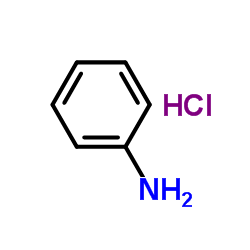

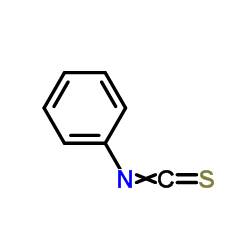
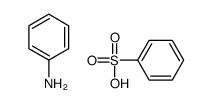

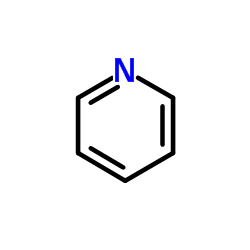
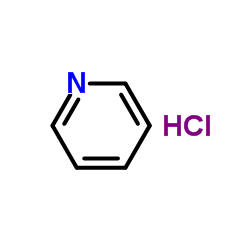

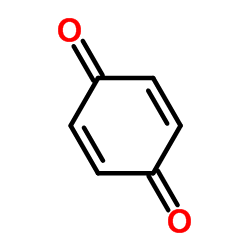
![4-amino-6-anilino-1H-[1,3,5]triazin-2-one structure](https://image.chemsrc.com/caspic/049/16120-30-2.png)
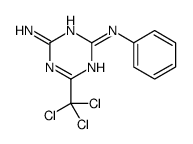



![1-(4-amino-6-anilino-[1,3,5]triazin-2-yl)-propan-2-one structure](https://image.chemsrc.com/caspic/458/50427-04-8.png)
